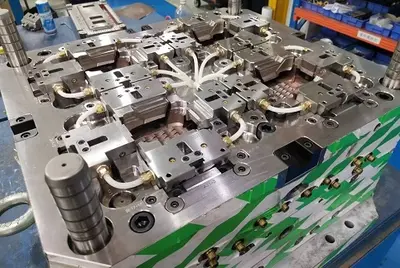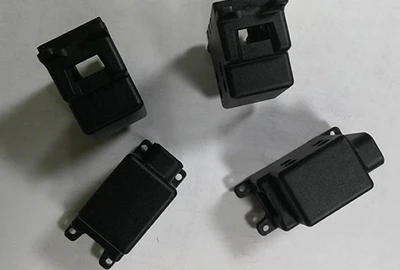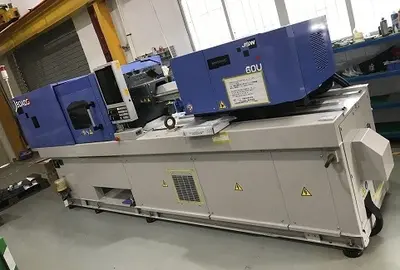

Injection molding is used to produce a wide variety of parts across numerous industries. Some common examples of parts that are injection molded include:
Consumer goods: Injection molding is used to produce a wide range of consumer goods, such as plastic toys, kitchenware, and electronics components.
Automotive parts: Many automotive components, such as dashboards, bumpers, and interior trim, are produced using injection molding.
Medical devices: Injection molding is used to produce a variety of medical devices, such as syringes, IV components, and surgical instruments.
Packaging: Injection molding is used to produce a variety of packaging materials, such as plastic bottles, caps, and containers.
Aerospace components: Injection molding is used to produce aerospace components such as interior cabin fittings and airframe components.
Household appliances: Injection molding is used to produce various parts of household appliances, such as washing machine parts, refrigerator components and more.
Construction materials: Injection molding is used to produce construction materials such as pipes, gutters, and insulation.
These are just a few examples, as injection molding is a versatile process that can be used to produce a wide range of parts across numerous industries.
Injection molding tooling can be expensive due to several factors.
Firstly, the tooling must be made with high precision and accuracy to ensure that each part produced is of consistent quality. This requires skilled labor and specialized equipment, which can drive up the cost. Additionally, the tooling must be made from durable materials that can withstand the high temperatures and pressures involved in the injection molding process. These materials can be expensive, especially for larger and more complex molds. Finally, the design and development of the tooling can also contribute to its cost, as it may require extensive testing and refinement to ensure that it meets the
The lifespan of injection molding tooling can vary depending on several factors, including the materials used, the complexity of the mold, and the conditions under which it is used. However, in general, well-maintained injection molding tooling can last for thousands or even tens of thousands of cycles before needing to be replaced. Regular maintenance, such as cleaning, lubrication, and inspection, can help to extend the lifespan of the tooling. Additionally, choosing high-quality materials and carefully designing the mold can also help to increase its durability and longevity.
Injection molding can be used with a wide range of materials, including:
1. Thermoplastics: The most commonly used materials in injection molding are various types of thermoplastics, such as polyethylene, polypropylene, polystyrene, ABS and Nylon.
2. Thermosetting plastics: These materials, such as epoxy and phenolic resins, are used when high strength and durability are required.
3. Elastomers: These materials, such as rubber and silicone, are used when flexibility and elasticity are required.
4. Metals: Injection molding can also be used with metals, such as aluminum and magnesium, to produce high-strength parts with complex shapes.
5. Composites: Injection molding can also be used with composite materials, such as carbon fiber and fiberglass, to produce lightweight, high-strength parts.
Several factors contribute to making a good injection mold, including:
Precision and accuracy: A good injection mold must be made with high precision and accuracy to ensure that each part produced is of consistent quality. This requires skilled labor and specialized equipment.
Durability: The mold must be made from durable materials that can withstand the high temperatures and pressures involved in the injection molding process. These materials can be expensive, especially for larger and more complex molds.
Ease of maintenance: A good injection mold should be designed with ease of maintenance in mind, with features that make cleaning, lubrication, and inspection as simple and straightforward as possible.
Design for manufacturability: The mold should be designed with manufacturability in mind, with features that simplify the injection molding process and minimize the risk of defects or quality issues.
Compatibility with the intended material: The mold should be designed with the specific material to be used in mind, with features that optimize the injection molding process for that material and minimize the risk of material-related issues such as warping, cracking, or deformation.
Cost-effectiveness: Finally, the mold should be designed to be as cost-effective as possible, with features that minimize the cost of producing each part while still meeting the necessary specifications.
Injection molding offers several advantages over other manufacturing processes:
1. High efficiency: Injection molding is a highly efficient process that can produce large quantities of identical parts quickly and consistently.
2. Design flexibility: Injection molding allows for a high degree of design flexibility, with the ability to create complex shapes, intricate details, and fine features that are difficult or impossible to achieve with other manufacturing processes.
3. Consistent quality: Injection molding can produce parts with a high level of consistency and accuracy, ensuring that each part is identical to the next and meets the necessary specifications.
4. Material versatility: Injection molding can be used with a wide range of materials, including plastics, metals, and composites, allowing for greater flexibility in material selection and part properties.
5. Cost-effective for large runs: Injection molding can be cost-effective for large production runs, as the cost per part decreases as the number of parts produced increases.
6. Low waste: Injection molding produces minimal waste, as any excess material can be recycled and reused in the manufacturing process.
One disadvantage of injection molding is that it can be less cost-effective for small production runs or for producing small quantities of parts. The initial investment in tooling can be high, and it may take some time to recoup that investment through the production of parts. Additionally, changing the design of the part or the mold can be time-consuming and expensive, which can make it difficult to modify the production process in response to changing needs or requirements. Finally, injection molding may not be suitable for all types of materials or parts, and other manufacturing processes may be better suited to certain applications.






 Call us on:
Call us on:  Email Us:
Email Us:  No.23, XingYi Road, Wusha Community, Chang'an Town, Dongguan City, Guangdong Province, China.
No.23, XingYi Road, Wusha Community, Chang'an Town, Dongguan City, Guangdong Province, China.